LIB 9.5%
Incumbent MP
Patrick Secker, since 1998.
Geography
Barker covers southeastern parts of South Australia. It stretches from Mount Gambier in the southeastern corner of the state up to the Murray River and the Barossa Valley.
History
The seat of Barker was first created for the 1903 election, and has been a seat that has consistently voted for Conservative parties. Apart from two terms of the Country Party, the seat has been held by the main non-Labor party since its creation.
It was first won in 1903 by John Langdon Bonython, a Protectionist MP first elected as a member for South Australia at-large in 1901. Bonython retired in 1906 and was replaced by Anti-Socialist candidate John Livingston. Livingston held the seat as a member of the Liberal Party and Nationalist Party before his retirement in 1922.
The seat was won in 1922 by Malcolm Cameron, who was elected as a member of the breakaway Liberal Party, who opposed the leadership of Billy Hughes, but returned to the Nationalists after Hughes deposition. He held the seat until 1934.
The seat was won in 1934 by the Country Party’s Archie Cameron. He served as a minister in the Lyons government from 1937 until Lyons’ death in 1939. After Earle Page refused to serve in government with Robert Menzies, the Country Party replaced Page with Cameron as their leader, and Cameron led the party back into government.
Cameron, however, was replaced by Arthur Fadden as Country Party leader in 1940, and Cameron resigned from the Country Party and joined the United Australia Party. Cameron joined Menzies’ new Liberal Party in 1945 and was elected Speaker of the House in 1949. Cameron remained Speaker and Member for Barker until his death in 1956.
The ensuing by-election was won by Liberal candidate Jim Forbes. He served as a minister in the Liberal government from 1963 until the election of the Whitlam government in 1972.
Forbes retired at the 1975 election, and was replaced by James Porter, who held the seat for fifteen years. He was replaced in 1990 by Ian McLachlan, a former president of the National Farmers Federation. McLachlan served as Minister for Defence for the first term of the Howard government, retiring in 1998.
The seat was won in 1998 by the Liberal Party’s Patrick Secker, who has held it ever since.
Candidates
- Simone McDonnell (Labor)
- Steven Donald Davies (Climate Sceptics)
- Patrick Secker (Liberal)
- Trevor Honeychurch (Family First)
- Sean Moffat (Greens)
Political situation
This seat is very safe for the Liberal Party and they should easily retain it.
2007 result
| Candidate | Party | Votes | % | Swing |
| Patrick Secker | LIB | 44,329 | 46.81 | -6.36 |
| Karen Lock | ALP | 38,475 | 30.07 | +8.60 |
| Deb Thiele | NAT | 9,695 | 10.24 | -0.35 |
| Phil Cornish | FF | 5,418 | 5.72 | -0.10 |
| Andrew Jennings | GRN | 4,796 | 5.06 | +0.98 |
| Justin Sneath | DEM | 1,984 | 2.10 | +0.62 |
2007 two-candidate-preferred result
| Candidate | Party | Votes | % | Swing |
| Patrick Secker | LIB | 56,301 | 59.45 | -10.43 |
| Karen Lock | ALP | 38,396 | 40.55 | +10.43 |
Booth breakdown
The electorate has been divided into seven areas. One area simply consists of the City of Mount Gambier. Another area, named “Lower South East”, covers the Grant and Wattle Range council areas. Grant council area surrounds Mount Gambier.
Four more council areas have been grouped as “Upper South East”. The Murray Bridge and Barossa areas have been grouped separately, with the remainder of the seat grouped under either Murray Mallee or Riverland.
The Liberal Party won in most parts of the seat, although its support level varies. They polled over 70% in the Upper South East and Murray Mallee regions in the centre of the seat. They polled between 55% and 60% in most other parts of the seat, although Labor won a slim majority in Mount Gambier itself.
The National Party, who came third across the seat, polled 20% of the vote in the Riverland district, and over 10% in the Upper South East and Murray Mallee.
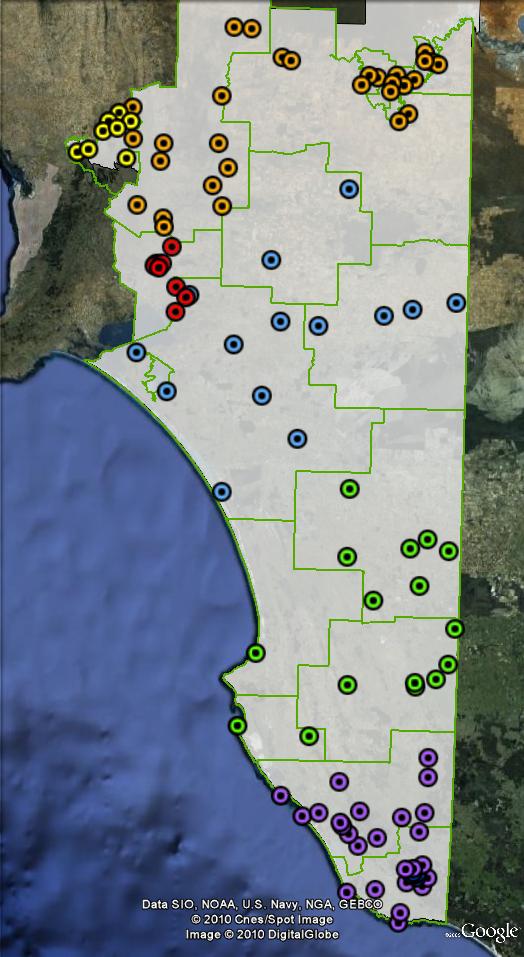
| Voter group | NAT % | FF % | LIB 2CP % | Total votes | % of votes |
| Riverland | 20.64 | 4.85 | 58.84 | 21,381 | 22.58 |
| Mount Gambier | 5.43 | 6.43 | 49.06 | 12,633 | 13.34 |
| Lower South East | 7.94 | 4.83 | 55.83 | 11,875 | 12.54 |
| Upper South East | 10.09 | 7.68 | 71.77 | 10,707 | 11.31 |
| Barossa | 4.21 | 5.71 | 59.55 | 9,562 | 10.10 |
| Murray Bridge | 4.57 | 6.77 | 56.77 | 9,050 | 9.56 |
| Murray Mallee | 10.50 | 5.84 | 70.89 | 4,706 | 4.97 |
| Other votes | 8.53 | 4.99 | 61.16 | 14,783 | 15.61 |
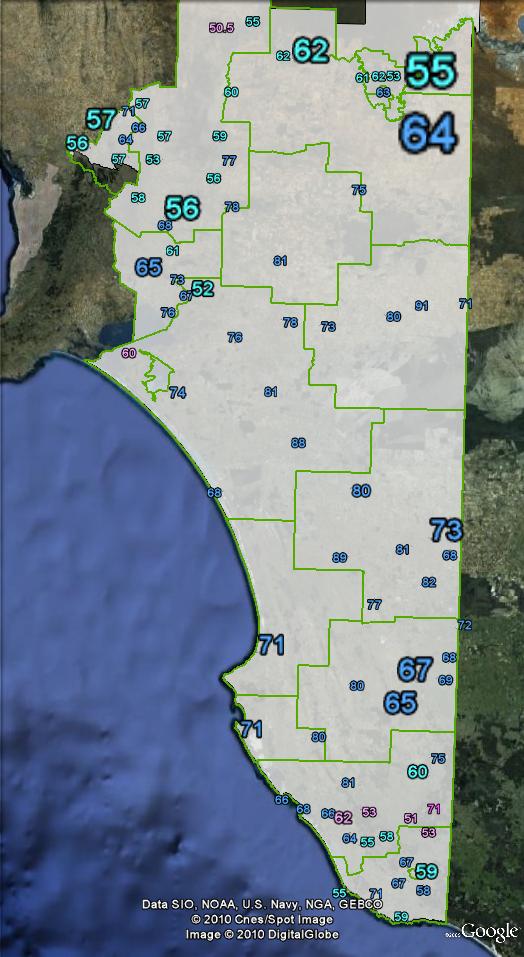
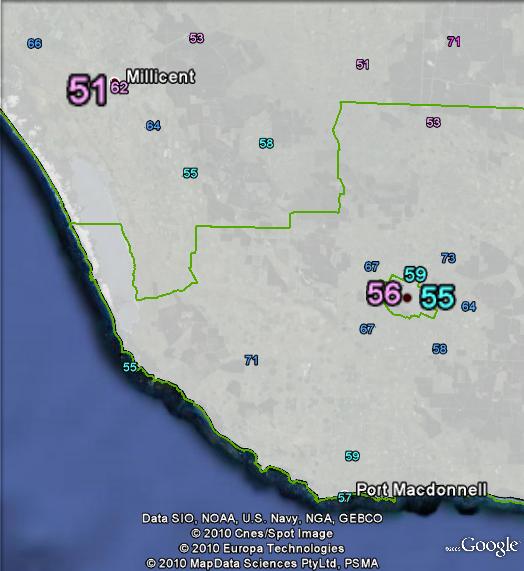
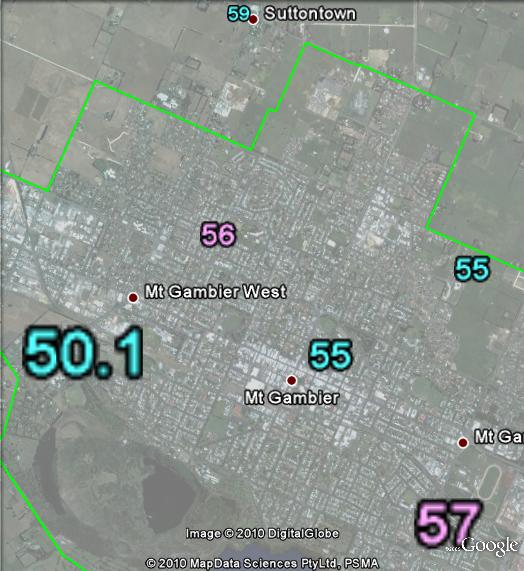
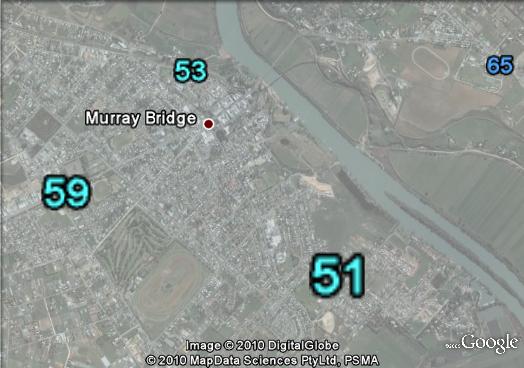
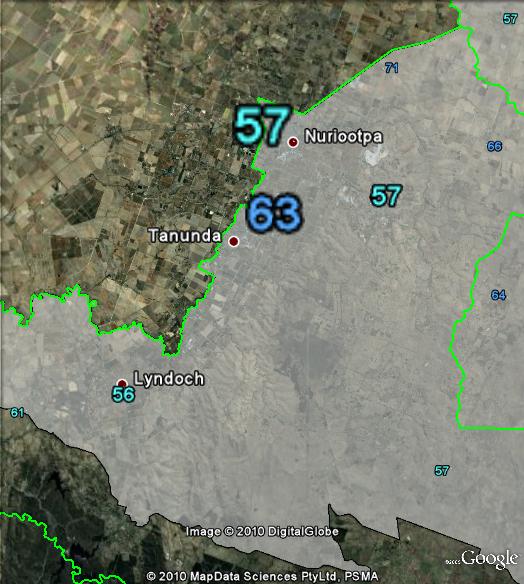
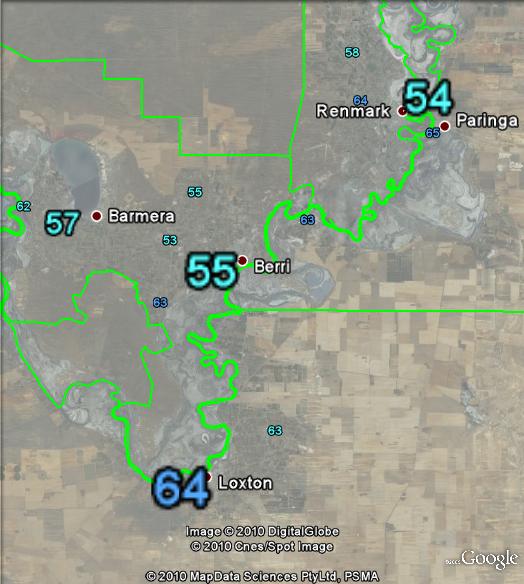


Word here is that former state Nationals MP, Karlene Mayward is being asked by the Nats to consider a tilt. The Nats think that if they can get her to run they have a good chance of beating Labor in the primary vote and then maybe getting past the Libs. From what I’m told Ms Mayward does not seem interested, but it would be the only thing to make this seat any kind of contest in 2010.
Won’t happen. Karlene Maywald has no credibility within her home area (the Riverland), whether or not she deserves that reputation, she wouldn’t stand a chance.
I only just noticed this… what’s the random 71% 2pp for Labor north of Mt Gambier? An Aboriginal settlement or something? (That’s where anomalous huge ALP votes tend to come from in the middle of nowhere, particularly in outback NSW / Qld.)
That booth is Nangwarry. Don’t know anything about the area though, but it is correct.
Simone McDonnell is the Labor candidate.
The ABC also reports Trevor Honeychurch as the Family First candidate.
The Democrats will be running Justin Sneath
Sean Moffat will run for the Greens.
Justin Sneath will no longer be running but will be replaced by Marie Nicholls running in Adelaide
No Nats candidate. Indeed, no SA Nats candidates in either the Reps or Senate.
My prediction: Liberal retain. 1-2% swing to Liberals.